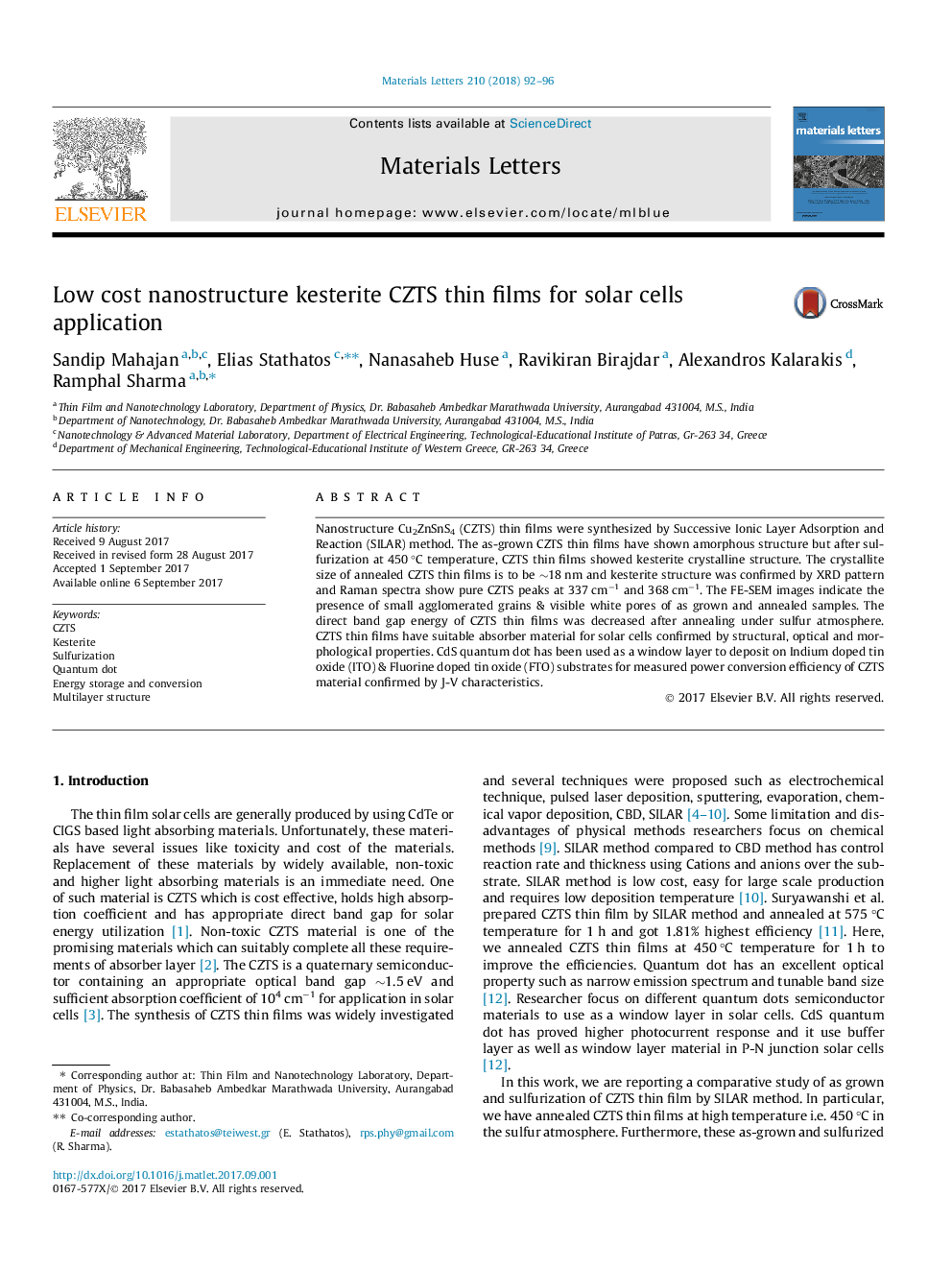| Article ID | Journal | Published Year | Pages | File Type |
|---|---|---|---|---|
| 5462604 | Materials Letters | 2018 | 5 Pages |
â¢Nanostructured CZTS thin films grown by SILAR method on glass substrate.â¢The effect of sulfurization on structural growth of the CZTS thin film is studied.â¢CdS quantum dots as a window layer or buffer layer used in solar cell devices.â¢Finally, ITO substrate show 1.68% efficiency compares to FTO substrate shows better 2.08% efficiency.
Nanostructure Cu2ZnSnS4 (CZTS) thin films were synthesized by Successive Ionic Layer Adsorption and Reaction (SILAR) method. The as-grown CZTS thin films have shown amorphous structure but after sulfurization at 450 °C temperature, CZTS thin films showed kesterite crystalline structure. The crystallite size of annealed CZTS thin films is to be â¼18 nm and kesterite structure was confirmed by XRD pattern and Raman spectra show pure CZTS peaks at 337 cmâ1 and 368 cmâ1. The FE-SEM images indicate the presence of small agglomerated grains & visible white pores of as grown and annealed samples. The direct band gap energy of CZTS thin films was decreased after annealing under sulfur atmosphere. CZTS thin films have suitable absorber material for solar cells confirmed by structural, optical and morphological properties. CdS quantum dot has been used as a window layer to deposit on Indium doped tin oxide (ITO) & Fluorine doped tin oxide (FTO) substrates for measured power conversion efficiency of CZTS material confirmed by J-V characteristics.
